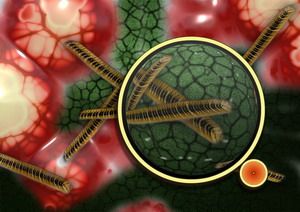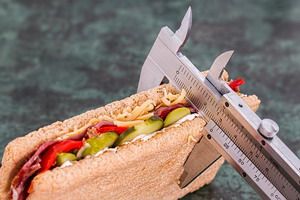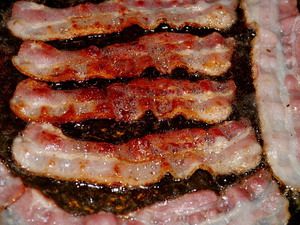
The New Year is upon us. 2015 was a year full of new research and information in the field of nutrition and weight loss, all of which can benefit those of us who may possibly have put on a few pounds over the holidays. Since today is probably the start of many New Year’s resolutions regarding a new beginning on health and weight loss goals, I thought it would be a good time to share some of this recent information and ideas on what works. Will you achieve the look and weight you desire in 2016? Having the latest information can help.
The biggest trend in new research is the impact of the gut micro-biome on our health and weight. That refers to the 100 trillion bacteria that live in our gut as well as viruses and yeasts. The average person has over 500 different bacteria strains living inside their gut at any moment. Which ones we have is a very individual situation. We are all different. Relative to weight loss there are two main types of bacteria scientists look at – Bacteroidetes and Firmicutes. Bacteroidetes promote weight loss while Firmicutes promote weight gain. The controlling factor that determines which one you grow in your gut is diet. Different bugs eat different things. The good guy bugs like vegetables, fruits, legumes, and healthy saturated fats, while the bad guy bugs love sugar, starches, and polyunsaturated oils.

Further research has now shown us that many of our food preferences and cravings are actually created by the bugs in our guts. They produce neurotransmitters and other chemicals that hijack our brains and make us seek out what they want to eat. So your inability to stop eating junk food could be because you are under the command of nasty bugs in your gut making you crave those foods. Likewise these gut bugs are now known to be a major cause of depression because of the chemicals they release. No wonder most of the medicines used for depression don’t work. They are not addressing the actual cause of the problem. Junk food bugs in the gut are poisoning people.
The health food industry has responded by producing tons of probiotic supplement products. While the idea is a good one, it is a little like trying to stop a truck with a fly swatter. With 100 trillion bacteria in the gut, taking a powerful probiotic with 5 billion good bacteria is only having a 0.005% impact. Some impact is better than none, but to really affect your bacterial composition you have to alter what you are feeding the little buggers. Different bugs eat different things. This is one of the reasons for the next “big thing” in the nutrition world…

For the last 100 years the mantra has been that a calorie is a calorie is a calorie. The belief always was that it does not matter where your calories come from, your weight is determined by how many calories you consumed. Thus we have had a hundred years of calorie counting diets that rarely worked. One reason for this is that calories coming from sugar and starch will grow very different gut bacteria than calories from vegetables and fish. A 2000 calorie diet of breakfast cereal and beer makes you fat, while the same number of calories eaten as vegetables and fish does not make you fat. Scientists started figuring this out about 20 years ago when they started comparing the diets of the Japanese and the Italians to the standard American diet. Now after 20 years of arguing and testing, the official word is that not all calories are the same. Where the calorie comes from makes a big difference.
The calorie viewpoint did have one thing right however – to lose weight you have to decrease the amount of calories you consume. You might be able to eat excess calories if they are from the right source without gaining weight, but to lose the fat weight you already have, you must decrease your intake. I say “fat weight” because many folks have excess weight in the form of excess stored water due to carbohydrate consumption and inflammation. Having a carbohydrate-based diet will automatically cause you to hold an extra 5 to 10 pounds of water. Inflammation can actually cause you to hold up to 20 to 30 pounds of excess water. So any diet that reduces your carbohydrate intake and reduces your inflammation will seem to work wonders for a while as it drops your excess water. But often these diets don’t actually cause you to lose any excess body fat. Instead, you seem to hit a plateau in the diet that you can’t break through once the extra water is gone.

This brings up another long standing argument in the nutrition field – which works better – low fat diets or low carbohydrate diets? Well after years of fighting and hundreds of studies, the final tally is in and the low carbohydrate diets win – on average. I say “on average” because all studies are based on statistical averages. The reality is that some people will do better on low fat diets. It is just that more people will do better on low carbohydrate diets.
Here is a good time to clear up a fine point in understanding low carbohydrate diets. Folks confuse low carbohydrate with a diet high in proteins. They are not the same at all. The body will actually turn any excess protein we eat into sugar -a carbohydrate. That is why going on a low carbohydrate diet to fight cancer*, also means being on a low protein diet as well. *Cancer needs carbs and the amino acid methionine from meat in order to survive and grow. A true low- carbohydrate diet is mostly non-starchy vegetables, healthy mono and saturated fats, and only 30 to 50 grams of protein a day – usually from eggs and nuts. Yes, we were all introduced to low carbohydrate living by the Atkins Diet, but the science has progressed quite a bit since the 60’s. A good weight loss diet does not need all that meat, although I personally have an addiction to the occasional pound of uncured bacon. Fortunately uncured bacon is mostly healthy saturated fat and very little actual protein.

The other rule left over from the Atkins days is that once you start a low carb diet you can never have any carb at all or your body will stop burning fats and you will have to start over with the three-week super strict induction diet. I believe this was mostly because the technology of the day was to do daily urine testing for ketones – the ready-to-burn form of fat in the blood. The problem was that if your body only released as much fat as ketones as your body could easily burn, then there was none in the urine to test. Eating a little carb would cause this, making it look like you had dropped out of the fat burning state. I have been using newer technology this past year by testing ketones released in the breath with a Ketonix breath tester. It will still register that I am in a nice fat-burning-state, even though I have been eating some carbs periodically. This makes more physiological sense to me. Fat burning is about building up the enzymes and receptor site sensitivities for fat burning. That does not shut down over night. Building the system up takes about three weeks, and it has tolerance for the occasional carb binge. This fits the healthy state of the body in which we are supposed to be able to switch back and forth easily between sugar burning and fat burning. Every time we go without food for 3 or 4 hours, we should be able to meet our energy needs by switching to fat burning – such as every night while we sleep.
I will be bringing the Ketonix to work so that my patients can test to see if they are in a fat burning state. Just let me know you want to test before the appoint begins as the tester takes about 5 minutes to calibrate before testing can begin.

Yes you saw me write the term “healthy saturated fat.” Another big turnaround to take place over the last couple years is the understanding that the big medical witch-hunt demonizing saturated fat has all been a big lie. No, it does not cause hardening of the arteries, or heart disease, or much of anything. Saturated fat is actually the preferred energy source for the body. Trans-fats are evil and do all these nasty things, but not natural, saturated fats like butter, coconut oil, palm oil, and chocolate. In fact the very thing the medical profession has been telling us to use – polyunsaturated fats like soy oil and canola oil – are the major producers of inflammation in the body. We actually need about half a teaspoon of these a day, but not the gallons of it we eat when we consume fried foods. The one type of polyunsaturated oil we do need more of is the omega 3 oils from fish.
The last big new trend that finally received some good research last year is on fasting. I have been a proponent of fasting since I did my first fast in my freshman year at UC Davis in 1971. Fasting is the closest thing we have to a fountain of youth. It is great for weight loss, but that is only the tip of the iceberg. Fasting triggers all sorts of gene changes associated with health and longer life. The latest article I read has the very encouraging revelation that fasting every other day is almost as effective as fasting every day. This puts fasting within the reach of the average person. Combine this with the studies over the last couple years that say the body actually enters the fasting state when your calorie consumption level drops to about 600 calories per day and fasting becomes much easier. When I started, fasting meant water only for 5 to 14 days, nothing else.

So where does this new information lead us? It leads us to a rather different looking diet protocol that should be the most effective for the serious dieter that wants to lose all that excess fat that is slowing them down and making them feel miserable.
- Eat mostly non-starchy vegetables for the bulk of your diet
- Eat most of your calories as saturated fat – like nuts, eggs, coconut oil, butter
- Eat only 40 to 50 grams of protein a day – nuts, seeds, grass fed meats, pastured eggs
- Fast on 600 calories every other day and 1800 calories the alternate days
- Avoid all carbohydrates and sugars the first three weeks – including fruits
- After three weeks you can have one high carb meal every other day
- If you are gluten sensitive, avoid all grains and dairy
- Make one of your non-fast, high carb meals each week a real party – eat things that are really emotionally satisfying to keep the diet from becoming a real drag – but only one time a week so as not to encourage the bad gut bugs from taking over.
The last area I am not touching on just yet is the use of prebiotic fibers to encourage the growth of the good bacteria. I am still researching this arena and am excited about some of the things I am finding.
Hopefully this gives each of you that have weight loss as a New Year’s resolution some useful guidance based on the latest research. The guidelines are pretty simple and should work nicely for most of you. I would suggest that you only follow this protocol for a maximum of 12 weeks, then take a break for 3 or 4 weeks to stabilize your losses. Exercise is not necessary at all for weight loss, but is helpful for speeding it up somewhat. Don’t let exercise be a stumbling block. That exercise demand is another old belief that has not proven to be true for weight loss. It is most helpful for maintaining the loss you achieve in the long run. Exercise and physical activity deliver oxygen and nutrients to your tissues and help your cardiovascular system work more efficiently.

And when your heart and lungs work more efficiently, you have more energy to go about your daily chores. It also helps combat depression.
Enjoy engaging this new playground and Happy New Year!
